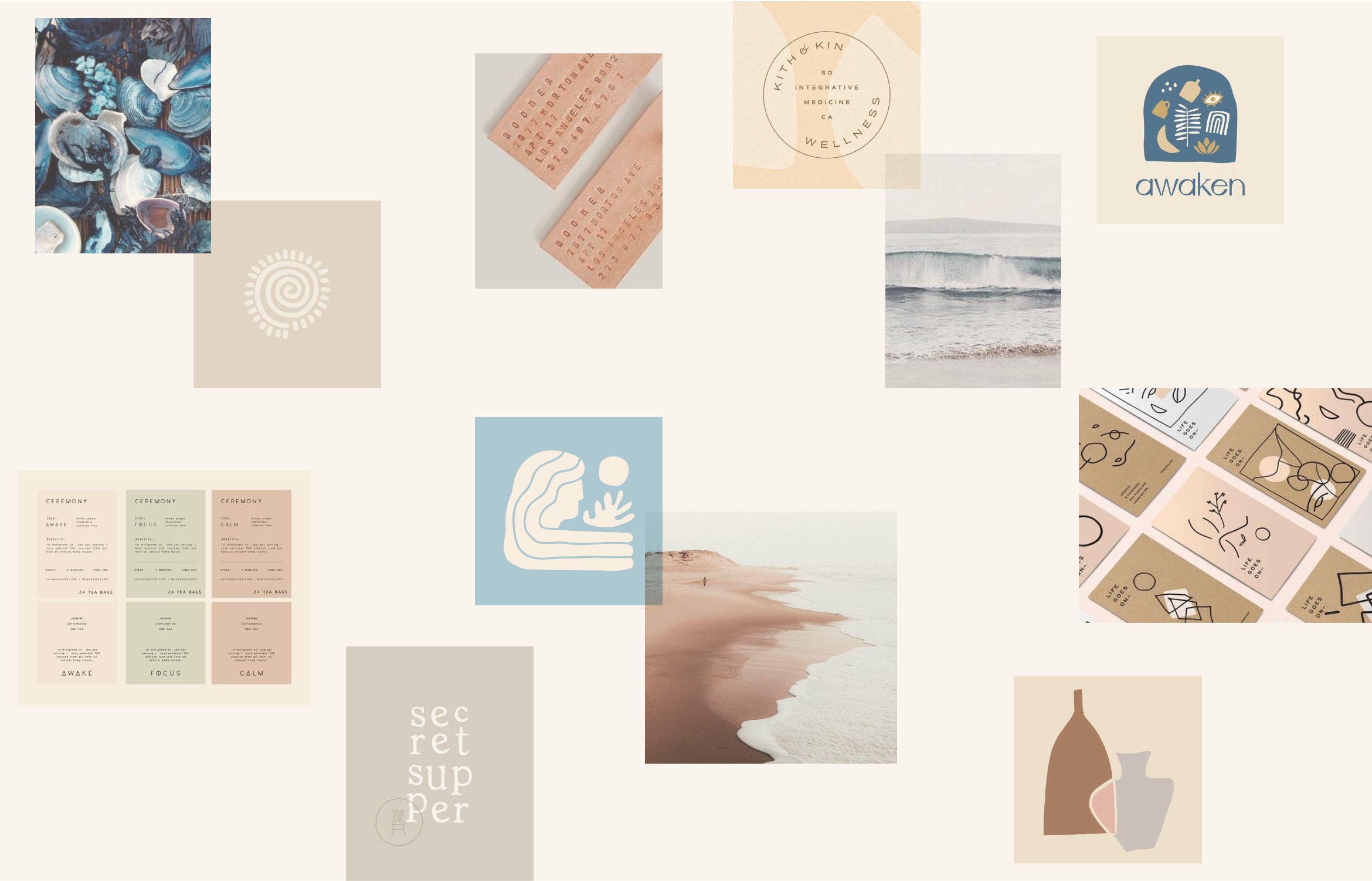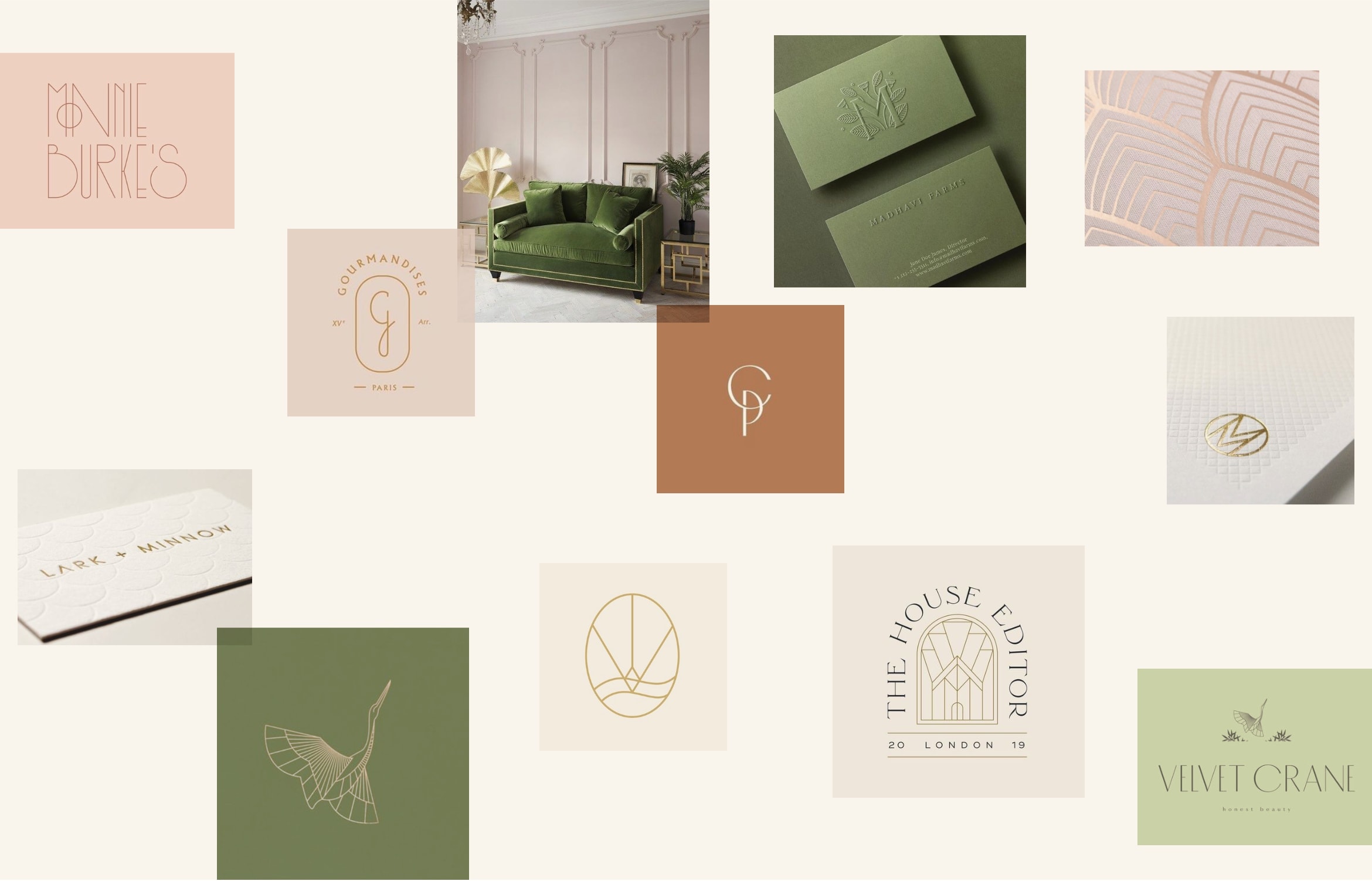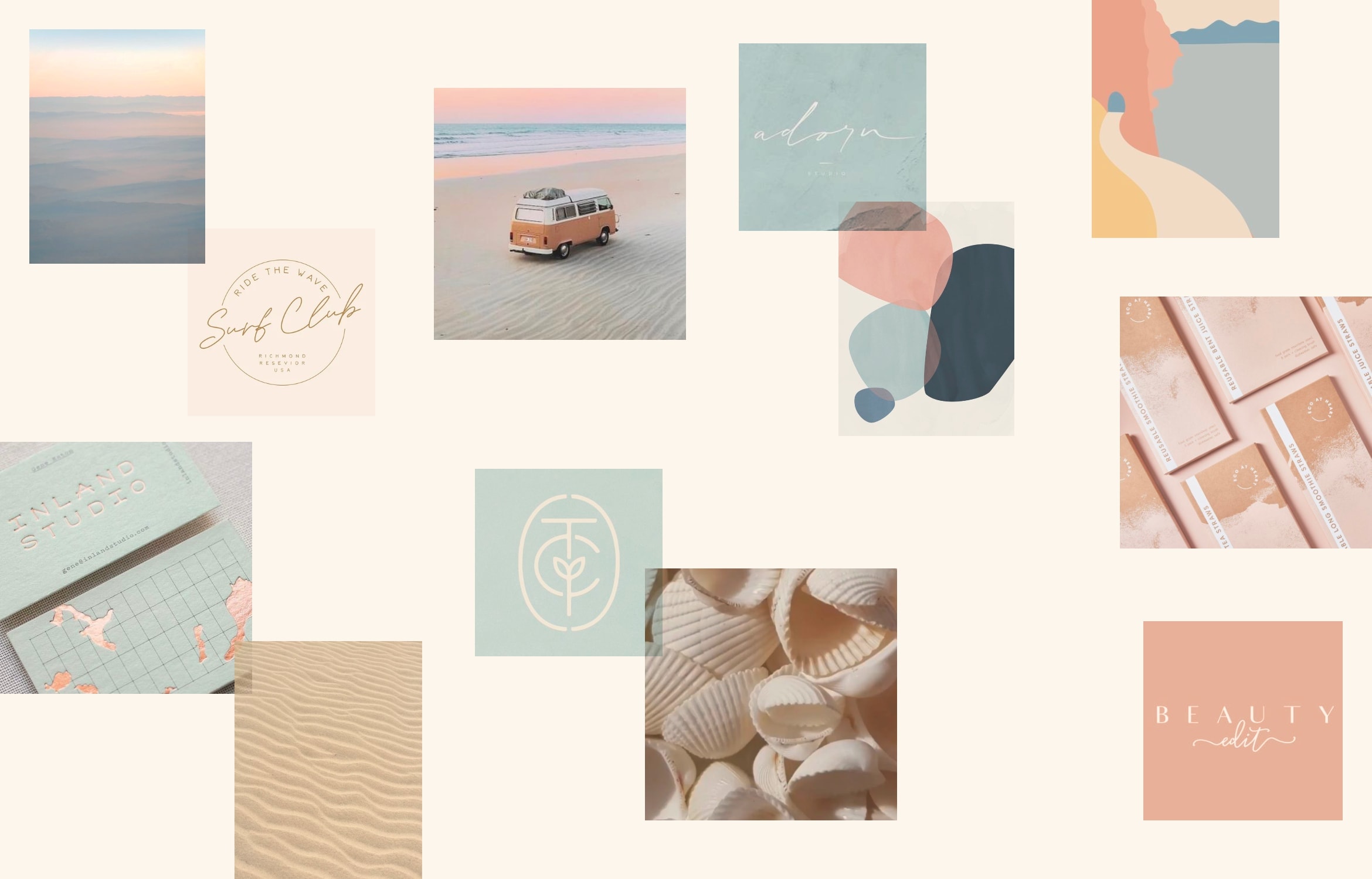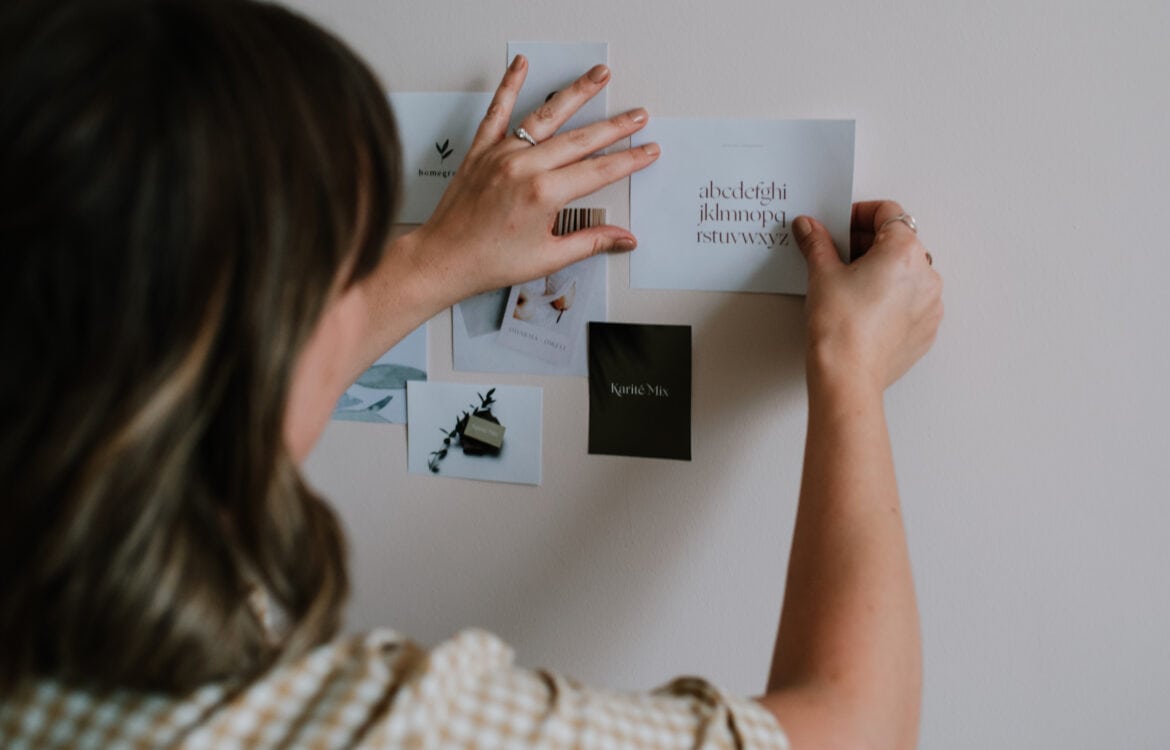Creating a branding moodboard is one of the most exciting parts of the design process. It’s a tool I often use to explore different types of ideas and projects – such as creating a vision board for your life or work – and it’s a great way of inviting some play into your day.
Moodboards are primarily used to set the tone for a project and ensure everyone involved has a feel for (and agrees on) the visual direction for a brand identity. But there’s also value in having a moodboard that you can refer to for assurance and inspiration as you build your business and make creative decisions.
Here, I share some tips on creating your own board along with collages of images, fonts, colours, shapes and textures that influenced the branding for a few of my client projects.

1. Create a Pinterest board
The moodboarding process is often messy, to begin with. And this is why I begin with the creation of a Pinterest board for each project. The responses to my branding questionnaire offer a helpful starting point as I ask clients questions about their influences and favourite brands but, more than that, using Pinterest creates an opportunity to explore ideas without constraint.
2. Include variety
When pinning inspiration, make sure you include photos, logos and packaging, and anything else that catches your eye and feels representative of the look and feel you’re aiming for. If you’re going for a cool, summer vibe, you might be inspired to source images of sea and sand, or printed items that have an earthy, natural feel as we did for The Mindful Potter, featured above.
3. Refine your board
Something I like to do with clients following our initial planning session is to refine their moodboard so we can create a concrete style. It’s a chance to review the inspiration that’s been gathered and consider the elements that could be removed. The planning stages are vital and this narrowing down of visual inspiration shouldn’t be skipped or rushed as it will form the foundation of your branding project.

4. Pinterest recommendations
Pinterest will begin recommending pins to you based on your activity, so make sure you take advantage of this feature as it can help to expand your search and include projects that align with the brand style. When I was creating the moodboard for Studio Nikogwendo, seen above, Pinterest would often recommend brands with a clean, stylish and luxurious style, as well as textured print methods such as letterpress or foiling.
5. Gather feedback
A crucial part of the branding project is to gather feedback. Invite your audience – this could be your customers or suppliers – to comment on the overall brand feel and see if you’re moving towards something that feels aligned, for you and them. Before revealing the brand identity for Kind & Conscious, featured below, I revealed the client’s moodboard on Instagram and we received such wonderful feedback, which gave the client more confidence in their brand image.
6. Collate your visuals
One of the most therapeutic parts of this process is bringing your visuals together onto a single page. I tend to cap them to about 12 sources of inspiration if it’s a single page, and a little more if I’m sharing through an Instagram carousel. And these moodboards can be created using design software such as Adobe Illustrator and Photoshop, Affinity Designer or Canva if that’s your preference.

There’s something so powerful about using visuals to help you think and plan and dream about the future of your brand. Not only can it give you direction in terms of considering the overall aesthetic you’d like to achieve, but it can also enable you to sense-check your styling against your vision and values, settle on a colour palette and explore font styling.
So set some time aside, make your favourite cuppa and pop on some music, and then use these hints and tips to help you make your moodboard. And do share it with me over on Instagram, either by tagging me in your post or on stories, so I can see your stunning collage!






